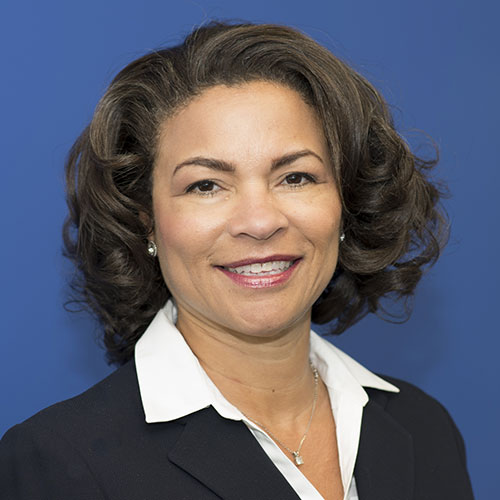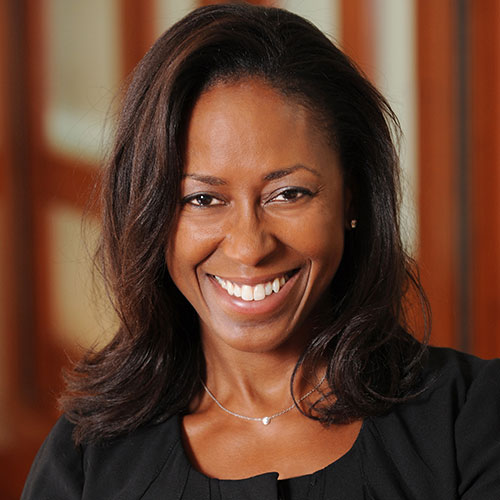
Denise Murrell
Biography
Denise Murrell is the curator of the forthcoming exhibition Posing Modernity: The Black Model from Manet to Matisse and Beyond at Columbia University's Wallach Art Gallery, and co-curator of the exhibition's expansion at the Musée d'Orsay, Paris, as the Wallach's first Ford Foundation Postdoctoral Research Scholar. She is the author of the New York exhibition catalogue, to be published by Yale University Press. Murrell is involved in initiatives to create greater diversity within the curatorial and academic professions of art history, and to develop exhibition programs that introduce overlooked narratives of interest to new and broader museum audiences.
What impact did HBS have on your life and the life of others?
HBS has had a major and enduring impact on my life and professional endeavors, including my more recent art history career. As unlikely as it may seem, the capabilities I developed as an MBA and then in my finance and consulting career have been incredibly relevant to my work as a curator. The ideas that inform an exhibition are based first and foremost on intangibles such as inspiration, passion, and extensive research. But the successful development and implementation of major exhibitions—especially those based on securing loans of major artworks from museums around the world—has required every bit of my MBA-based skillset: relationship development, project management, and the ability to get a show open to the public on time and, crucially, on a budget for which, like other curators, I have often played a lead role in securing funding. Also key is the HBS gift that keeps on giving—an incomparable alumni network that is still very much a source of contacts and counsel in the art world.
HBS was also where I first sought to place an international perspective at the center of my life and career, building out from my core African American identity. This is one of the best decisions I made at that time. It informed all of my subsequent career moves, and really set me on the path to my late second career in art history. I have come to embrace my perennial minority status as an African American woman MBA and PhD as the main impetus for acquiring the multifaceted skills and experiences that have shaped my life in an evermore gratifying way.
Looking back, the defining aspect of being black and a woman at HBS was the very strong sense of being, most of the time, in a distinct minority—and during the late 1970s it was a tiny one. There were only about 30 black students in my class, of whom fewer than 10 were women. As much as I acutely felt the challenges of that situation, it also intensified my development of a liminal approach to life and work—an ability to thrive within, and across the interstices of, at least two cultural spaces at the same time. I prepared cases with my section study group and attended AASU review sessions. Some of my black women classmates were definitely an anchor-a group I could count on to talk frankly through myriad issues. Still, I have learned that the best relationships are based on affinities of values and interests; this can transcend disparate life circumstances.
It's also interesting to reflect on how organically I transitioned into the field of art history. In the beginning, I joined museum support groups that focused on African American and diasporan art, at New York's Museum of Modern Art and the Studio Museum in Harlem. Over time, I started taking art history classes at night at Hunter College, then got a masters in art history at Columbia University. My first paid work as a moonlighting art historian was to write and give gallery talks at the Metropolitan Museum of Art. One of them became an online essay, African Influences in Modern Art, which is still a feature on the Met's site 10 years later.
After leaving Institutional Investor, I used a paid non-compete period to travel. With some time and reflection, I realized I wanted to place my art endeavors at the center of my life and work. By the end of that hiatus, I was enrolled in a full time PhD program at Columbia.
I've found that I am still a definite rarity as a black, female art historian (much as I was in my business career), especially since I have focused, in part, on pre-contemporary fields like Matisse and the School of Paris and Manet and Impressionism. These are small, tight-knit cohorts; access often requires inside introductions. My work to excavate the (many) unexplored African diasporan narratives around those subjects, and to address issues of stereotyping and marginalization, has met with both welcoming collaboration and incredulous skepticism.
I would love to see more black art history professionals, viewers, and collectors give at least some of their attention to these and other earlier periods of art history. We have the example of the many black artists who work from a very strong sense of roots, but also engage freely, and with depth, across the entire spectrum of periods and cultures.
We have in recent years had a very welcome spate of important exhibitions, awards, and other recognition of major and overlooked black artists and professionals. But the art world does not yet, for the most part, reflect the diversity of the communities it serves. There is definitely a need to introduce a multiplicity of perspectives to the collection, display, and interpretation of art past and present.
Know that the unique perspectives that you bring to the HBS experience are as valid as anyone else's; you are enriching everyone's capacity for leadership in today's pluralistic world by sharing them. Know that one of the best ways to be a team player is to be a constructive disrupter. Don't be afraid to challenge unexamined consensus. Be open to "taking it all in." Make it a project to put yourself in others' shoes, to have empathy.

